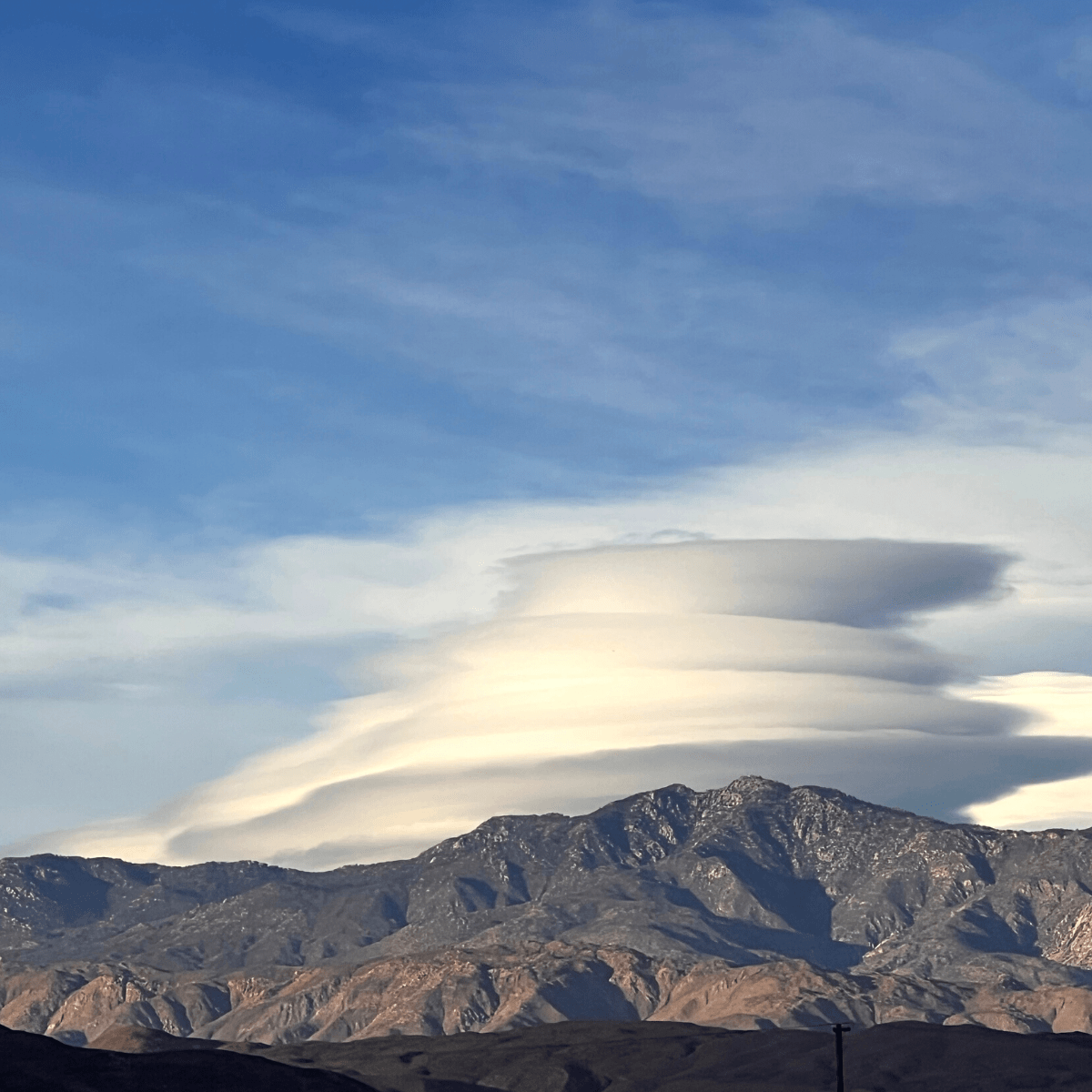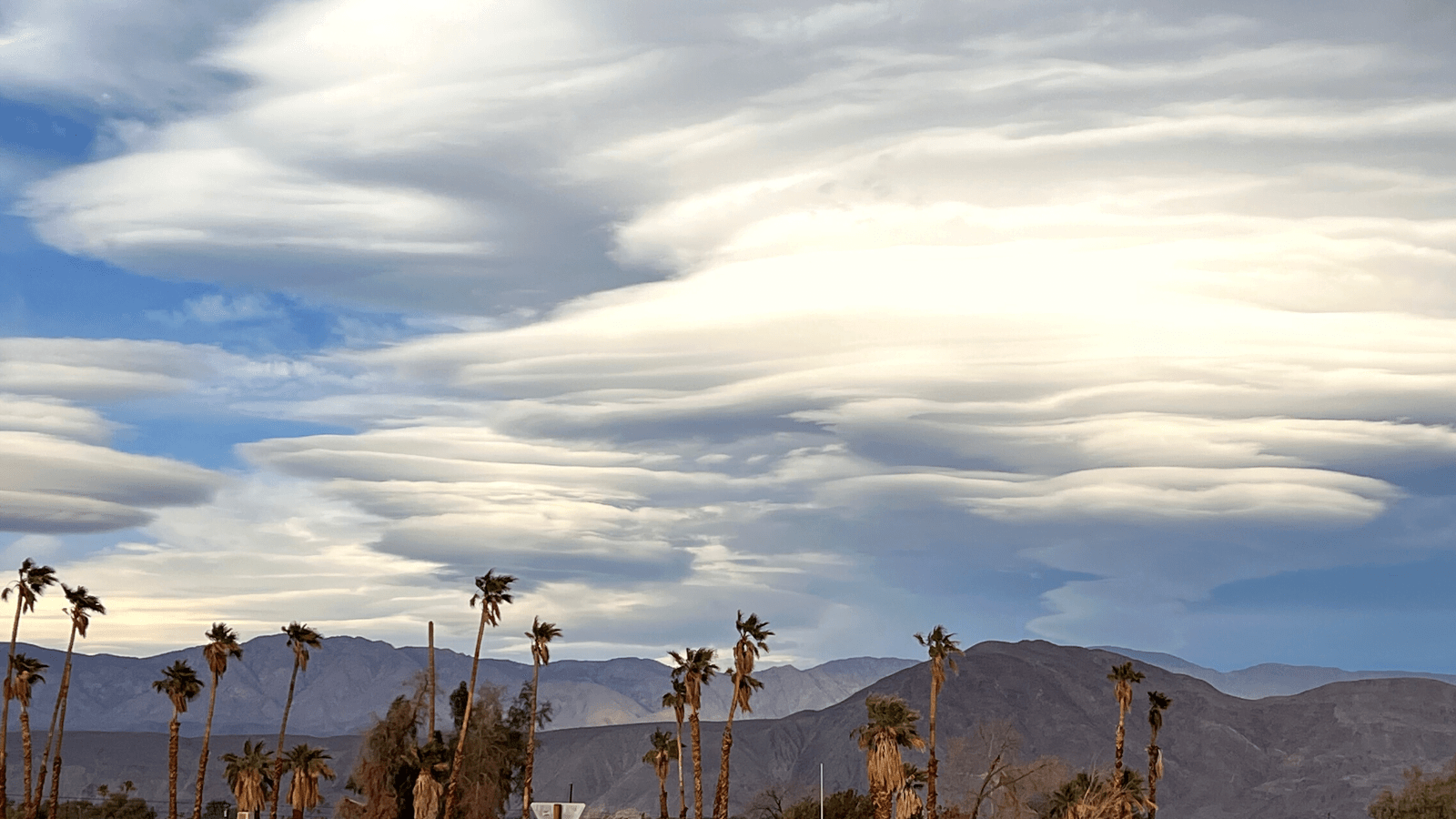Lenticular Clouds in Borrego Springs: A Phenomenal Sight for Cloud Watchers
Share

Borrego Springs, California is a desert oasis located in the Anza-Borrego Desert State Park. It’s a great place to escape the hustle and bustle of city life and enjoy the beauty of the desert landscape. But what really sets Borrego Springs apart is its reputation as a prime location for cloud watching.
One type of cloud that is particularly fascinating to observe in Borrego Springs is the lenticular cloud. These clouds are lens or saucer-shaped and often resemble flying saucers or UFOs. They form in the troposphere, the lowest layer of Earth’s atmosphere, and are typically found at high altitudes, such as on mountaintops or along the crest of a wave.

So what causes lenticular clouds to form? It all has to do with the movement of air. When moist air is forced to rise over a mountain or other obstacle, it cools and the moisture condenses into clouds. If the air is stable, the clouds will remain stationary, creating the lenticular shape.
Borrego Springs is an ideal location for observing lenticular clouds due to its high elevation and mountainous terrain. The combination of these factors creates the perfect conditions for the formation of these stunning clouds.
What makes them unique?
In addition to their mesmerizing appearance, lenticular clouds also have a unique property that sets them apart from other types of clouds. They are often stationary, remaining in the same location for extended periods of time. This makes them a particularly interesting subject for cloud watchers, as they can observe the clouds and study their movements over a longer period.
Aside from their scientific significance, lenticular clouds are also a source of wonder and inspiration for many. Their unusual shape and the way they seem to hover in the sky can be truly breathtaking.
If you’re a fan of cloud watching or just appreciate the beauty of the natural world, a visit to Borrego Springs is a must. The opportunity to observe lenticular clouds in their natural habitat is truly a once-in-a-lifetime experience. So pack your camera and head to Borrego Springs to see these phenomenal clouds for yourself.
Where to Find Lenticular Clouds: The Best Places to Observe These Stunning Formations
Lenticular clouds can be found in a variety of locations around the world. They are most commonly seen in mountainous regions, as the topography of these areas creates the necessary conditions for their formation. Lenticular clouds are often found along mountain ranges and can be seen hovering above peaks or along the crest of a wave.
In addition to mountainous regions, lenticular clouds can also be found in other areas with strong winds, such as along coastlines or in valleys. They can also form in the tropics, where moist air is forced to rise over mountains or other obstacles.
Lenticular clouds are typically observed at high altitudes, as they form in the troposphere, the lowest layer of Earth’s atmosphere. However, they can also be seen at lower altitudes in certain conditions.
If you’re interested in seeing lenticular clouds, it’s a good idea to visit an area with a high elevation and strong winds. Keep an eye on the weather forecast and try to plan your trip for a time when the conditions are favorable for the formation of these stunning clouds.
Fun Facts About Lenticular Clouds: The Fascinating Science Behind These Stunning Formations
- Lenticular clouds are often mistaken for UFOs due to their unusual shape and the way they seem to hover in the sky.
- Lenticular clouds are formed when moist air is forced to rise over a mountain or other obstacle. As the air cools, the moisture condenses into clouds, creating the lenticular shape.
- Lenticular clouds are stationary, remaining in the same location for extended periods of time. This makes them a unique subject for cloud watchers.
- Lenticular clouds can form at any time of year, but they are most commonly observed in the fall and winter months.
- Lenticular clouds are most commonly found in mountainous regions, but they can also be seen in other areas with strong winds, such as along coastlines or in valleys.
- Lenticular clouds can range in size from a few hundred feet to several miles in diameter.
- Lenticular clouds are often referred to as “lens clouds” or “saucer clouds” due to their shape.
- Lenticular clouds can be multilayered and can appear in a variety of colors, including white, gray, and pink.
- Lenticular clouds can be seen in a variety of locations around the world, but they are most commonly observed in mountainous regions with strong winds.
- Lenticular clouds are a source of fascination for many people, and their unusual shape and movement make them a truly stunning sight to behold.









